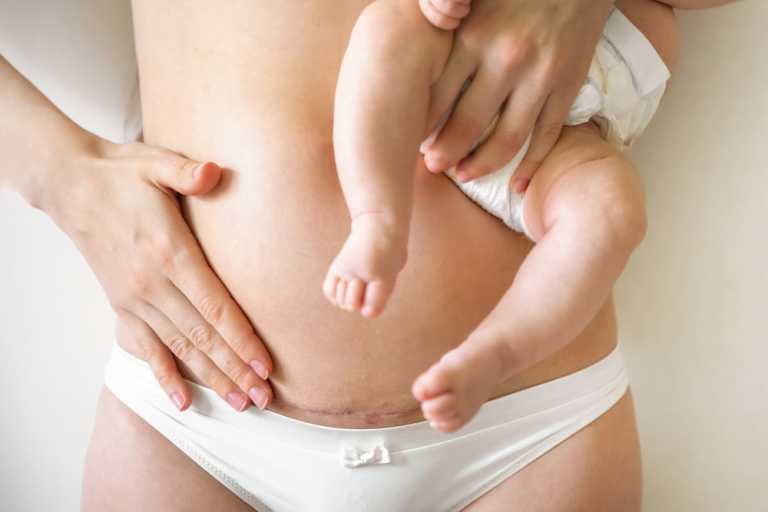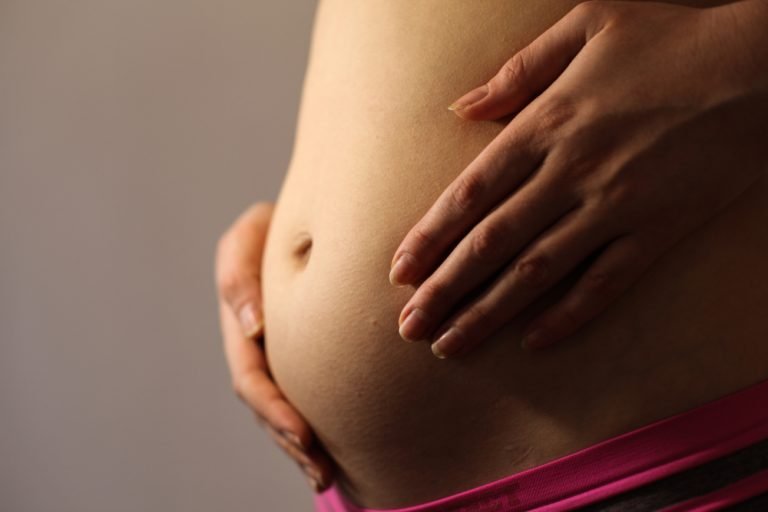C-section rates are rising, but not just because of medical needs. More and more women are opting for surgery. Sometimes to avoid the side effects of vaginal delivery, and other times simply for convenience.
Of course, having the choice and control over your body and birth is fantastic. But it can also be overwhelming, as it’s a big decision. Generally, c-sections bring more risks and can impact your baby into adulthood. However, natural births have drawbacks, too.
To make things easier, we’ve summarized the key differences between C-sections and vaginal births. Plus, the long-term consequences of each option.
In a Hurry?
Here’s a quick overview of the key points to consider:
| C-Section | Vaginal Birth | |
|---|---|---|
| Chance of Maternal Death | 0.013% | 0.004% |
| Hospital Stay | 2 to 4 days | 1 to 2 days |
| Recovery Time | 6 to 8 weeks | 6 weeks |
| Pain | Typically, lower during birth and higher during recovery. | Typically, higher during birth and lower during recovery. |
| Risk of Infection | Higher | Lower |
| Risk of Incontinence | Lower | Higher |
| Breastfeeding | Less likely to start and continue. | More likely to start and continue. |
| Baby’s Lungs | Higher chance of post-birth respiratory issues, admission to the NICU, and developing asthma. | Lower chance of post-birth respiratory issues, admission to the NICU, and developing asthma. |
| Baby’s Immune System | Higher risk of immune-related conditions. | Lower risk of immune-related conditions. |
| Chance of Complications in Future Pregnancies | Higher | Lower |
| Infant Mortality Rate | There is a higher rate of infant mortality after a c-section. However, the data is skewed as babies with medical issues are more likely to be delivered via cesarean. | |
Is a C-Section or Vaginal Birth Safer for Mom?
The safest way to deliver your baby is vaginally. This is because a cesarean is a major open abdominal surgery that carries risks.
According to the American College of Obstetrics and Gynecology, C-sections increase the likelihood of the following complications compared with natural deliveries:
- Cardiac arrest – 5.1 times more likely.
- Wound Hematoma – 5.1 times more likely.
- Hysterectomy – 3.2 times more likely.
- Major Infection – 3 times more likely.
- Complications with Anesthesia – 2.3 times more likely.
- Blood Clot – 2.2 times more likely.
- Hemorrhage and Severe Blood Loss – 2.1 times more likely.
- Maternal Death – 3.25 times more likely.
However, it’s important to note that even though these statistics sound dramatic, we are talking about tiny percentages. So, the chances of a c-section resulting in a hysterectomy are just 0.03%, and the death rate is just 0.013%.
Of course, complications during birth aren’t the only thing that could impact your health. Here are the other well-being factors you may want to consider:
Recovery
After a c-section, you may stay in the hospital for 3 to 4 days and spend at least 8 weeks recovering. This includes around 6 weeks when you cannot take a bath, drive, exercise, bend, or lift.
After a straightforward vaginal birth, you will have some mild soreness around your perineum for a few days. But if you suffered tears or had an episiotomy, you may have stitches that will be more uncomfortable and take longer to heal. Generally, though, your hospital stay will be shorter, lasting just a day or two.
Incontinence
During a natural birth, your baby will stretch the tissues around your vagina. This can cause tearing and/or weakening of your pelvic floor muscles and the muscles controlling your bladder and bowel, leading to incontinence.
Incontinence is also a risk after a cesarean section due to muscle or bladder damage. But the condition is 50% more likely after vaginal childbirth.
Scarring
Many C-section incision scars heal well and fade in time. However, there is always a risk of:
- Itchiness
- Adhesions
- Scar pain
- Infection
- Scar dehiscence
- Keloid scars
Most of these risks can be reduced with proper aftercare, rest, and scar massage. In extreme cases, problems can be treated with laser resurfacing or surgery.
Is a C-Section or Natural Birth Safer for the Baby?
The data shows a higher infant mortality rate for babies delivered via c-section than vaginally. However, as most cesareans are performed due to medical complications or emergencies, this isn’t a good measure of risk.
If your doctor recommends a C-section, this is likely the safest way to deliver your child. But, if you are considering an elective cesarean for non-medical reasons, it may not be. So, knowing the potential long-term consequences for your baby’s health is essential.
Breathing
Before birth, your baby’s lungs are filled with fluid, and they get oxygen through the umbilical cord. Then, when they’re born, the temperature change triggers a very fast process where the fluid is absorbed, and the baby can take their first breath.
During a vaginal birth, hormones and the physical movement of your baby through the birth canal help prepare for this process. But in a c-section delivery, your baby will skip a few steps. So they may struggle to clear their lungs as quickly.
This is why 4 times more cesarean babies will have respiratory problems and need time in the NICU. They are also more likely to develop asthma.
Immunity and the Microbiome
As your baby passes through the vaginal canal, they will be exposed to vaginal and fecal bacteria. This might sound gross, but it’s vital for developing their immune system and gut microbiome.
If your baby is delivered surgically, they won’t have this exposure, and their gut microbiome may end up lacking certain healthy bacteria. This means they’ll be more likely to develop immune-related conditions like:
- Allergies
- Diabetes
- Eczema
- Arthritis
- Celiac disease
- inflammatory bowel disease
Obesity
According to a 2020 study, babies born via Cesarean are 11% more likely to be obese in adulthood. They’ll also have a 42% higher risk of developing type 2 diabetes.
Which Is More Painful, a C-Section or Vaginal Birth?
The pain you experience during and after birth will depend on your baby’s position, pain medications, and complications, not just the delivery method.
Natural births are typically thought to be more painful during delivery but less painful during recovery. However, an epidural can eliminate labor pains, and severe tearing can significantly increase recovery discomfort. So, the situation can easily be reversed.
Really, there’s no way of knowing which route may end up being the most comfortable for you and your body.
If you feel very nervous about pain, discuss it with your healthcare provider. They should talk you through the available options and ensure you avoid the worst of the discomfort.
Breastfeeding After a C-Section
When your body doesn’t go into labor naturally, it can take longer for your milk to come in. This leads many c-section moms to top up with formula while still in the hospital.
The trouble with this is that your milk works on a supply-and-demand basis. So, as your baby gets more formula, they’ll nurse less, and your supply will drop further. This is why breastfeeding rates are lower, and nursing duration is shorter after surgical deliveries.
However, if you are determined to nurse, your delivery method should not stand in your way. To increase your supply, you can pump, speak to a lactation consultant, and even change your diet. In time, you should be able to produce enough milk for your baby and even drop the formula altogether.
Future Pregnancies
Having a c-section makes delivering vaginally in future pregnancies (VBAC- vaginal birth after c-section) more risky. So, it’s highly likely that one surgical birth will lead to another.
The trouble with this is that the chance of complications with the placenta, stillbirth, and ectopic pregnancy will rise with each section. For this reason, many experts recommend having no more than 3.
When is a C-Section the Best Option?
In many cases, a vaginal birth will be the safest and healthiest way to deliver your baby. However, c-sections are not the enemy and are often a life-saving intervention.
For example, they may be the right way to go in the following situations:
- Multiples, such as twins or triplets.
- Failure to progress during labor.
- Fetal distress, in which it is deemed unsafe to deliver vaginally.
- The baby is too large to be delivered vaginally.
- Previous Cesarean birth.
- The baby is in a breech or transverse position.
- Complications of the placenta.
- Complications of the umbilical cord.
- The mother has an infection or STD that poses a threat to the baby if delivered vaginally.
- Fear or anxiety about giving birth.




